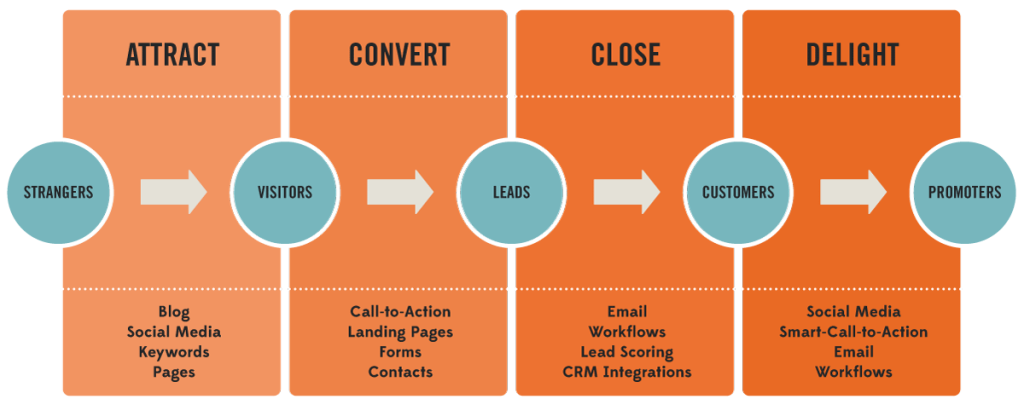
As we move down the pathway of inbound marketing actions, we have learned how to attract your target audience and convert them from strangers to leads. Now it’s time to bring those new leads into the fold as a paying client or customer. In this post, we’ll dive into the tools available to help with step three of the buyer’s journey and turn leads into customers by closing sales.
Step Three: Close
 You’ve attracted the right visitors and converted the right leads, but now you need to transform those leads into customers. At this step of the game, you need to leverage your marketing toolkit to make sure you are tracking your information and closing those opportunities.
You’ve attracted the right visitors and converted the right leads, but now you need to transform those leads into customers. At this step of the game, you need to leverage your marketing toolkit to make sure you are tracking your information and closing those opportunities.
There are a variety of closing tools available to help streamline this process:
- Customer Relations Management (CRM) – Customer Relations Management systems track the details about your business opportunities. All your contacts, companies, and deals in your pipeline are stored in your CRM and help you easily get in touch with the right prospects at the right time. CRM systems facilitate sales by making sure you and your team have the right information available at any time in order to better engage with prospects across every channel. A CRM is especially important to a business with an existing sales team to track client “touches” to ensure that every team member can be up-to-date with all historical customer interactions. Initially, using a CRM can seem daunting but once you and your team commit to using its systems consistently, you will quickly realize the advantages of collecting and storing your customer outreach information in a single, easily-to-access system.
- Closed-loop Reporting – How do you know which marketing efforts are bringing in the best leads? Is your sales team effectively closing those best leads into customers? Integration with your CRM system and facilitating closed-loop reporting allows you to analyze just how well your marketing and sales teams are playing together. Here’s a great article on closed-loop reporting that helps explain this valuable tool that is part of most great CRMs.
- Email nurturing – Pretty much everyone uses email these days to stay in touch and share information. Inbound marketing leverages that “contact currency” through email nurturing campaigns to keep those leads you have collected on your site engaged. A series of emails focused on useful, relevant content can build trust with a prospect and help them become more ready to buy. Email nurturing can be a manual process or, as part of a highly tuned inbound marketing campaign, can be part of a marketing automation system.
- Marketing Automation – Marketing automation involves creating email marketing and lead nurturing tailored to the needs and lifecycle stage of each lead. For example, if a visitor downloaded an eBook from your site in the past but has not yet converted to a customer, you can nurture this lead through a series of automated outreach to keep in touch and provide information about other content offers they might find interesting, or even additional materials to check out on your site. Putting all of these tools to work for you creates opportunities to tailor your nurturing to fit their interests.
Congratulations! You just closed your first deal and transformed a stranger to a lead to a customer. Now is not the time to take your foot off the throttle, however. Keep your clients excited about your brand and convert them from customers to promoters via the final stage of our inbound marketing series: Inbound Marketing 101: The Four Marketing Actions Part 4 – Delight. Learn more here tomorrow.
Did you miss our other Inbound 101 series posts? Here are links to other articles:
